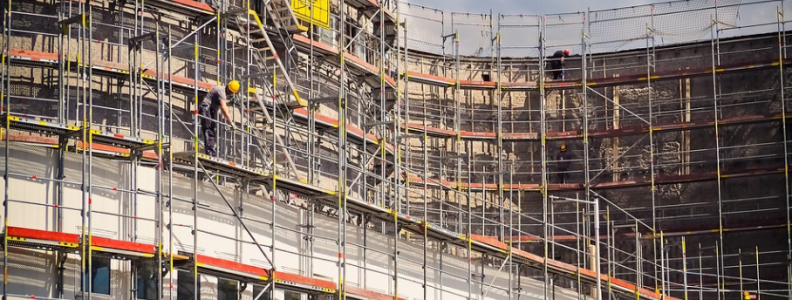In the ever-evolving world of construction and architecture, the advancement of technology has played a pivotal role. From towering skyscrapers to intricate architectural designs, the underlying strength of any construction project often hinges on its foundational elements. Among these, scaffold systems stand out as a cornerstone, offering not only structural support but also ensuring the safety and efficiency of the workforce involved. This article delves into the multifaceted role of scaffold systems in modern construction, exploring their impact, evolution, and the future trends that are shaping this vital component of the construction industry.
Scaffold Systems: The Backbone of Construction Sites
Scaffold systems, often perceived as mere temporary structures, are in fact integral to the construction process. They provide a safe and stable platform for workers, enabling them to perform tasks at various heights with ease. The versatility of scaffoldings allows for their use in a wide range of projects, from simple residential buildings to complex industrial structures. Their design has evolved significantly over the years, transitioning from basic wooden frameworks to sophisticated modular systems made of steel or aluminium, offering enhanced strength and flexibility.
The safety aspect of scaffold systems cannot be overstated. With stringent safety regulations in place, modern scaffolding must adhere to high standards, ensuring the well-being of workers. This focus on safety has led to innovations in design, such as guardrails, toe boards, and non-slip platforms, significantly reducing the risk of accidents.
Innovations in Scaffold Design and Materials
Recent years have seen remarkable innovations in scaffold design and materials. Lightweight yet strong materials, such as aluminium and composites, have become more prevalent, allowing for quicker assembly and disassembly. This not only saves time but also reduces labour costs. Moreover, the introduction of modular scaffolding systems has revolutionised the industry. These systems are highly adaptable, able to conform to various shapes and sizes, making them ideal for complex architectural projects.
Another significant advancement is the integration of digital technology into scaffold systems. Digital platforms enable real-time monitoring of scaffold structures, ensuring they remain within safety parameters. This technological integration is a testament to the industry’s commitment to safety and efficiency.
Scaffold Systems: Beyond Construction
While scaffold systems are predominantly associated with construction, their utility extends beyond this realm. They are frequently employed in the maintenance and repair of buildings and other structures. Additionally, scaffolding plays a crucial role in event staging, film production, and artistic installations, demonstrating its versatility.
The Future of Scaffold Systems
Looking ahead, the future of scaffold systems is closely tied to the advancements in technology and materials science. The emergence of more durable, lightweight materials will further enhance the efficiency of scaffold systems. Additionally, the integration of smart technology, such as IoT (Internet of Things) and AI (Artificial Intelligence), is set to transform scaffolding into more than just a physical structure. These intelligent systems will be able to predict maintenance needs, monitor safety parameters, and even adapt to changing environmental conditions.
Conclusion
Scaffold systems are a fundamental component of modern construction, playing a critical role in ensuring safety, efficiency, and versatility. As technology continues to evolve, so too will the capabilities and applications of these systems. The construction industry’s ongoing commitment to innovation and safety bodes well for the future of advanced scaffold systems. This commitment not only benefits those directly involved in construction but also contributes to the broader goal of creating safer, more efficient, and aesthetically pleasing built environments.
For more insights into the latest trends in the construction industry, readers may find the discussion on sustainable building practices enlightening, a topic that has gained significant traction in recent years. This subject explores the industry’s shift towards environmentally friendly materials and energy-efficient designs, underscoring the construction sector’s role in promoting sustainability.





